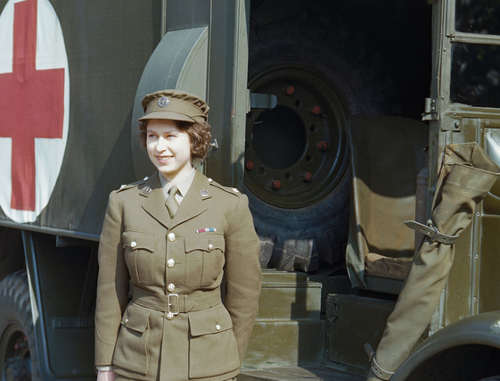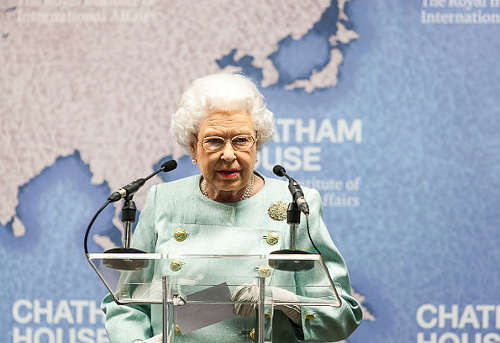محتوای الکترونیکی
Elizabeth II - the Queen who almost wasn't

Queen Elizabeth II, who in 2015 became the longest-serving British monarch in history, was not born to be queen. In fact, as a child in pre-war Britain, she never expected to be queen. She – and everyone else – imagined that her uncle Edward, the King's eldest son, would follow normal tradition and become the next British monarch when his father, King George V, died; and that after him, the crown would pass to his son or daughter, assuming that he married and produced an heir. Elizabeth was the daughter of King George V’s second son, Albert George. Albert, known in the family as Bertie, was a demure young man, much less popular and active than his older brother; he was shy and not very good at talking in public. Bertie’s shyness and his speech impediment were both magnificently portrayed in the 2010 movie The King’s Speech. Bertie, it was presumed, would remain the younger brother of the the next king, Edward VIII, and his two daughters, Elizabeth and Margaret, would spend their life as “minor royals”, neices of the king, or, when Edward VIII died, aunts of the next monarch, whether this was a king or a queen. Yet as often happens, history did not go forward according to plan. In January 1936, King George V died at the age of 70, and the crown automatically passed to his elder son Edward, Prince of Wales, who immediately became King Edward VIII. The British government was alarmed; Edward was seen as a playboy, notorious for his affairs with married women. The government, of course, could not remove a king, but they made it plain to him that he had to change his ways. Edward did not change his ways; on the contrary, he announced on November 16th that he was going to marry his lover, Mrs. Wallace Simpson, a twice-divorced American. The British establishment was rocked to the core by this news: social traditions in those days were strict, and it was expected that the future King of England would marry a young lady from the British or European aristocracy, not a divorced commoner from the USA.
 Aged 19, Princess Elizabeth signed up as an army driver during the final year of the Second World War.. She did not imagine that 7 years later, she would be Queen
Aged 19, Princess Elizabeth signed up as an army driver during the final year of the Second World War.. She did not imagine that 7 years later, she would be Queen So it came as a bombshell when, on 6th February 1952, George VI, who was a heavy smoker, died of lung cancer at the age of just 56. While it was well-known that the King was not in good health, no-one was prepared for him to die so young, least of all his daughter Princess Elizabeth, who got the news of her father’s death while on an official tour in Africa. She and her husband Prince Philip, the Duke of Edinburgh, immediately returned to Britain, where, at the age of just 26, she took up the heavy duties of Queen of England, the United Kingdom and other realms.
 2014 - Aged 88, Queen Elizabeth II was still carrying out most of her official business as head of state – including official visits and speeches
2014 - Aged 88, Queen Elizabeth II was still carrying out most of her official business as head of state – including official visits and speeches At the age of 94, Queen Elizabeth II still carries out many of the essential jobs of the Head of State, though age and the Covid epidemic have combined to significantly reduce her workload since 2020. She still has regular discussions with her Prime Minister, and signs the documents that require Royal Assent. While most people of her age have been retired for close on 30 years, Queen Elizabeth II has often intimated that she will never retire, and will carry out her duties to the country and to her other dominions as long as she is able to.
Today, Queen Elizabeth remains alert and in good health, and above all is probably the most genuinely popular head of state in the world. Over the past 70 years, the British Royal Family has had its ups and downs, but by and large the Queen herself has remained popular with the large majority of the British population throughout her reign. If she reaches the age of 100, which will occur in 2026, she will be the first head of state anywhere to reach such a milestone.
WORDS
STUDENTS' WORKSHEET
Elizabeth: the Queen who almost wasn't
1. Picturesque phrases; choose the nearest equivalent of each of the following expressions: click down arrow and select the correct answer.
- Assuming that :
- Rocked to the core :
- Thrust into the limelight :
- It came as a bombshell :
- has had its ups and downs... :
3 Reading for information
Queen Elizabeth's grandfather was King . (two words)
King Edward VIII was Elizabeth's . (one word)
Complete these sentences using information from the text, and providing the number of words indicated
For teachers:
This text is more the story of how a young girl was propelled by circumstances into a position that she had not expected to be in, and how she has made - by general consensus - a great success of it.
Queen Elizabeth has been a point of reference in Britain and indeed in the world for almost seventy years. Most people in Britain have never known life without "the Queen". Some time, probably in less than ten years from now, Queen Elizabeth will no longer be there. This will be a moment of huge rupture in Britain and well beyond its shores. For many, Queen Elizabeth is not just the Queen, she is the monarchy. Will this British institution survive for long after she has gone? Probably? Maybe? Perhaps not for long?
Grammar: Conditionals. Though this text does not contain many examples of conditionals, the content almost encourages revision of the third conditional (unfulfilled hypothesis). The young Princess Elizabeth was not destined to become Queen, but she did. Ask all students to look at the text and make up three unfulfilled hypothetical statements starting ....
If "uncle Edward" had not ......
If King George VI....
If Queen Elizabeth.......
There are lots of potential ways in which to complete each of these sentences. Compare the unfulfilled huypothetical "if" structure with the open conditional structure which is used in the final sentence or the article.
"Put your question in the box"
بهترین ها
| نام | تعداد آزمون | میزان موفقیت | |
|---|---|---|---|
| َAmeneh Darvishzadeh | 1 | 100/00 % | |
| Mehrad Hashemi | 1 | 100/00 % | |
| مهدی حسین پور آقائی | 1 | 100/00 % | |
| Farnoush Toghiany | 21 | 98/36 % | |
| zahra namdari | 46 | 98/21 % | |
| یاسمن محمدی پور | 4 | 98/08 % | |
| Sheida Taheri | 3 | 97/37 % | |
| پژمان همدانی | 3 | 97/37 % | |
| محمدحسین میرزایی | 3 | 97/30 % | |
| Tara Mohammadi | 3 | 96/43 % | |
| yasaman mohamadipur | 51 | 95/86 % | |
| محمدجواد ملائی اردستانی | 3 | 94/44 % | |
| Arzhang Saberi | 4 | 93/33 % | |
| Soheila Karimi | 124 | 92/73 % | |
| aram farhmand | 10 | 92/31 % | |
| یاشار اسکندری | 98 | 91/14 % | |
| الشان مقیمی آذر | 11 | 90/80 % | |
| عباس پورمیدانی | 1 | 90/00 % | |
| پریسا سلوکی شهرضایی | 72 | 89/49 % | |
| ارشیا قلمکاری | 33 | 89/23 % |






